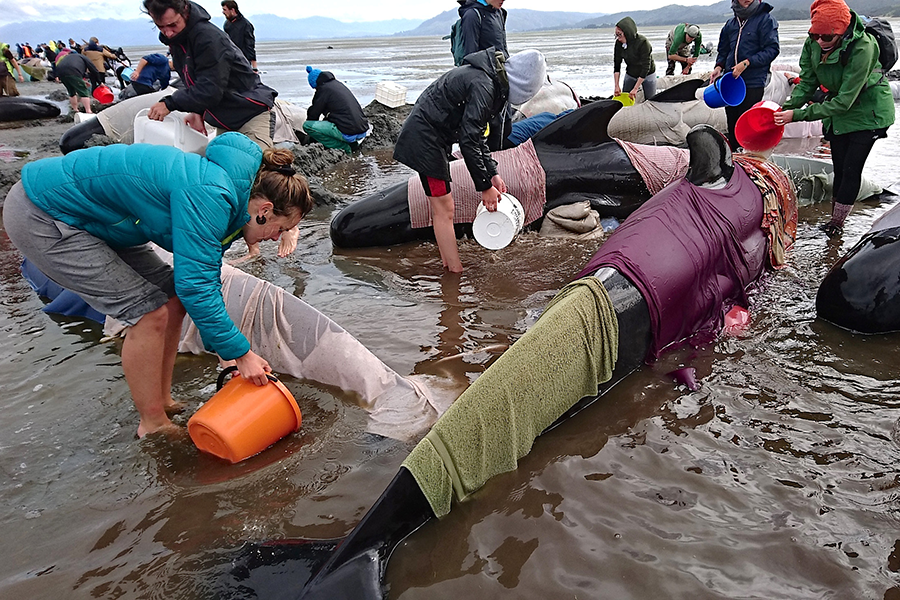Hundreds of ordinary Kiwis rush to aid of beached whales
Loading...
Volunteers and wildlife authorities in New Zealand are racing to save the last survivors among hundreds of pilot whales that ran aground on South Island’s remote Farewell Spit, in one of the worst beachings in the country’s history.
About 275 of the more than 400 whales were already dead by the time they were discovered early Friday morning by a magazine editor out on a pre-dawn trip with a photographer and guide. Within hours, some 500 locals and tourists descended upon the beach to help Department of Conservation workers refloat the 140 or so survivors, managing to do so with about 50 of them during high tide.
"It was just heartbreaking," the magazine editor, Cheree Morrison, told the Associated Press. "Utterly heartbreaking."
About 80 or 90 others remained beached, with many of the rescuers planning to return for Saturday’s high tide in hopes of refloating more – including about 50, according to the New Zealand Herald’s count, who have become stranded again since being refloated.
A Department of Conservations operations manager, Andrew Lamason, told the Herald that another 50 or so whales were lingering offshore.
“They're not looking great out there, just milling around,” he said.
The mass, impromptu arrival of volunteers who responded to the beaching seemed to highlight New Zealand’s unusual fondness for the whales that live off its shores – a fondness that locals say has roots in the country’s beach culture, as well as the frequency with which whales strand themselves in shallow South Island bays.
Liz Slooten of the New Zealand Whale and Dolphin Trust told New Zealand’s Stuff.com that Kiwis, like people in other countries, were drawn to the whale’s sociality and their habit of parenting calves for a long time. But the public in New Zealand, where about half of all marine mammals make their home offshore, has a special sort of bond to the animals.
"I think the beach culture makes people more keen than they might be in other parts of the world to save them," Dr. Slooten told the site.
"When you see a whale on the beach, you call DOC and help out. It's become part of our culture. Partly because there's so many strandings here. Somewhere like France, the USA, there are good stranding networks.... But somehow there's a much stronger culture of that here."
It’s not entirely clear why whales strand themselves – theories range from distraction while following prey to attempts to protect sick pod members, or even disorientation caused by irregularities in the magnetic field – but pilot whales are especially prone to mass strandings because of their exceptionally social nature, according to the American Cetacean Society.
Farewell Spit, which hooks off the northwestern part of South Island into the Tasman Sea, has gotten a reputation as a whale trap. In the most recent incident, 98 pilot whales were stranded in February 2015, and in January 2014, 70 whales ran aground in two separate beachings, according to the New Zealand Herald.
The largest mass stranding in New Zealand history was in 1918, when about 1,000 pilot whales ran aground on the Chatham Islands, while the second-biggest, with 450 stranded in Auckland, came in 1985.
This report contains material from the Associated Press.








